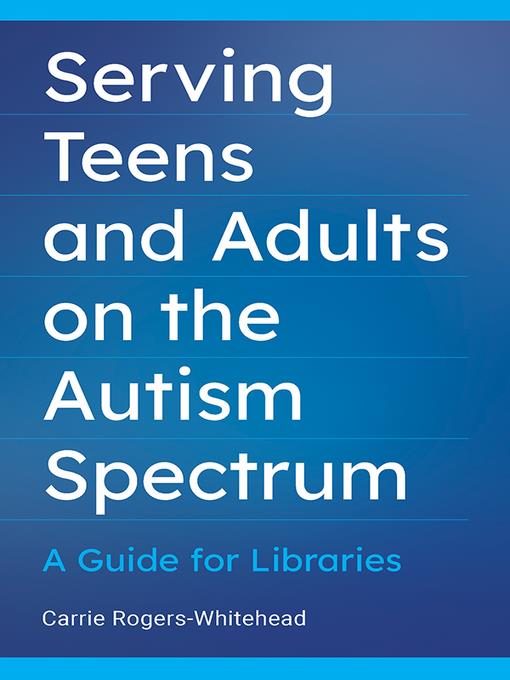
Serving Teens and Adults on the Autism Spectrum
کتاب های مرتبط
- اطلاعات
- نقد و بررسی
- دیدگاه کاربران
نقد و بررسی

December 1, 2020
Rogers-Whitehead (Digital Citizenship: Teaching Strategies and Practice from the Field) provides a road map for libraries on how to better serve autistic individuals. Owing to increasing awareness and understanding, more adults are being diagnosed with autism, but unfortunately accommodations for this community have lagged behind. Rogers-Whitehead asserts that libraries are uniquely able to address this gap because of their mission to serve and inform the public. Libraries have dedicated staff, spaces, resources, and programs; furthermore, many autistic people consider the library a safe space. The author recommends several ways to provide support, such as developing programs for autistic teens and adults (as well as for their caregivers), setting aside dedicated spaces for those who need a sensory break, providing comfortable furniture, and offering volunteer and employment opportunities for autistic individuals. Rogers-Whitehead promotes inclusive collection development as well, with recommendations for relevant books and resources. This guide concludes with a useful appendix of programs to put into practice. VERDICT Recommended for all public libraries as an essential guide to provide support for an underserved community.--Dave Pugl, Ela Area P.L., Lake Zurich, IL
Copyright 2020 Library Journal, LLC Used with permission.

January 1, 2021
In this practical guide, Rogers-Whitehead argues that libraries are in a unique position to provide support to teens and adults who are on the spectrum, particularly as they age out of services provided by institutions such as public school systems. While public librarians are clearly the target audience, many of the ideas and resources shared may be relevant to school and academic librarians as well. The book begins with an overview of autism spectrum disorder, then discusses how libraries can help meet the needs of people on the spectrum. Rogers-Whitehead covers physical and digital accessibility, employment opportunities, outreach and community partnerships, programming examples for teens and adults, collection development, and more. The author discloses in the preface that she herself is not on the spectrum, but she does share examples from her own work as a librarian serving those who are, and she includes excerpts from interviews with library staff and patrons who are on the spectrum. She repeatedly encourages readers to seek out feedback from patrons who are on the spectrum about how to improve library services. Extensive references follow each chapter, and the author shares additional websites and resources throughout. An appendix outlines additional programming ideas. VERDICT An exceedingly thorough starting place for understanding how libraries may better serve and support patrons who are on the spectrum.-Lauren Strohecker, McKinley Elem. Sch., Elkins Park, PA
Copyright 2021 School Library Journal, LLC Used with permission.

























دیدگاه کاربران